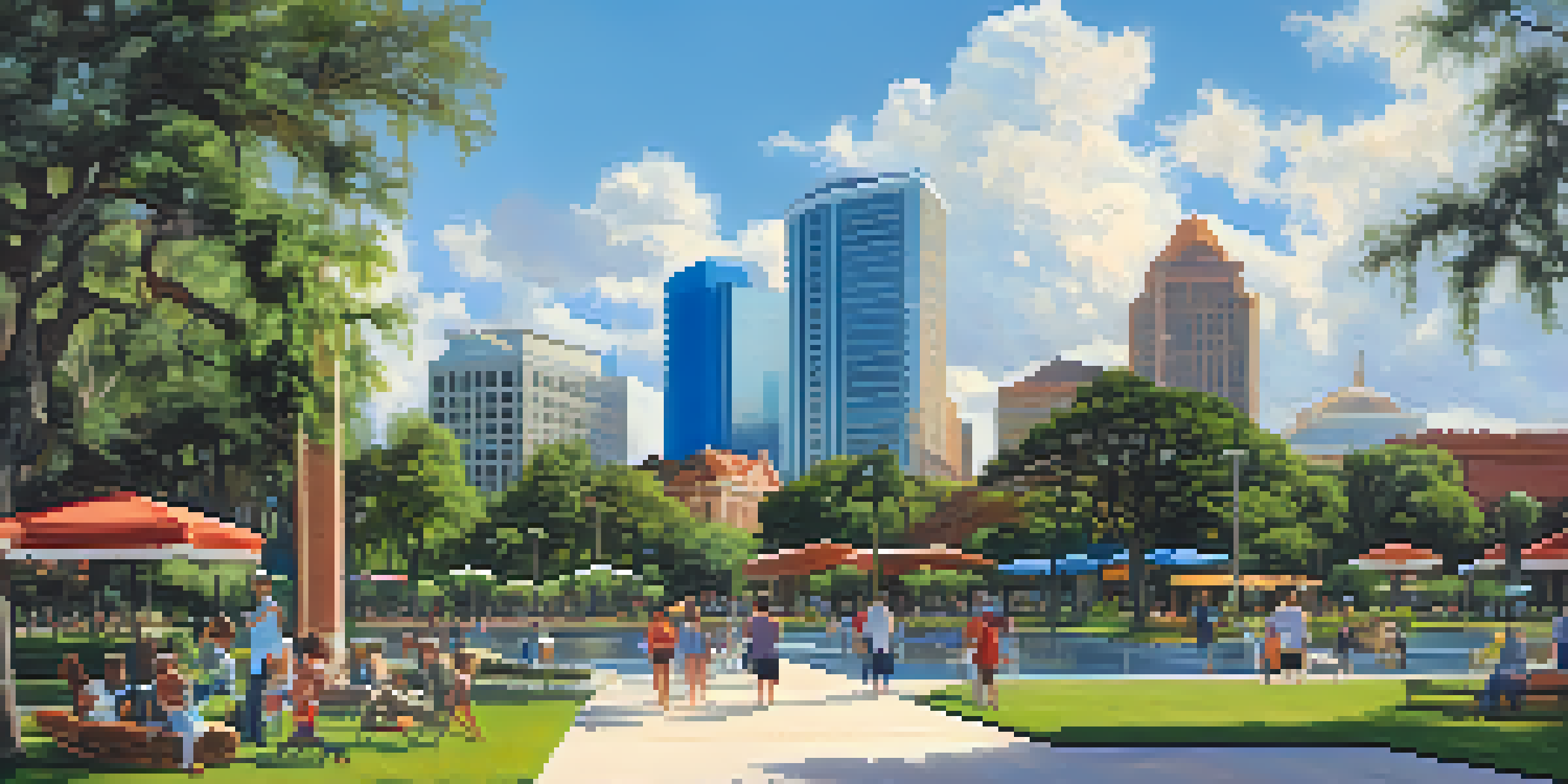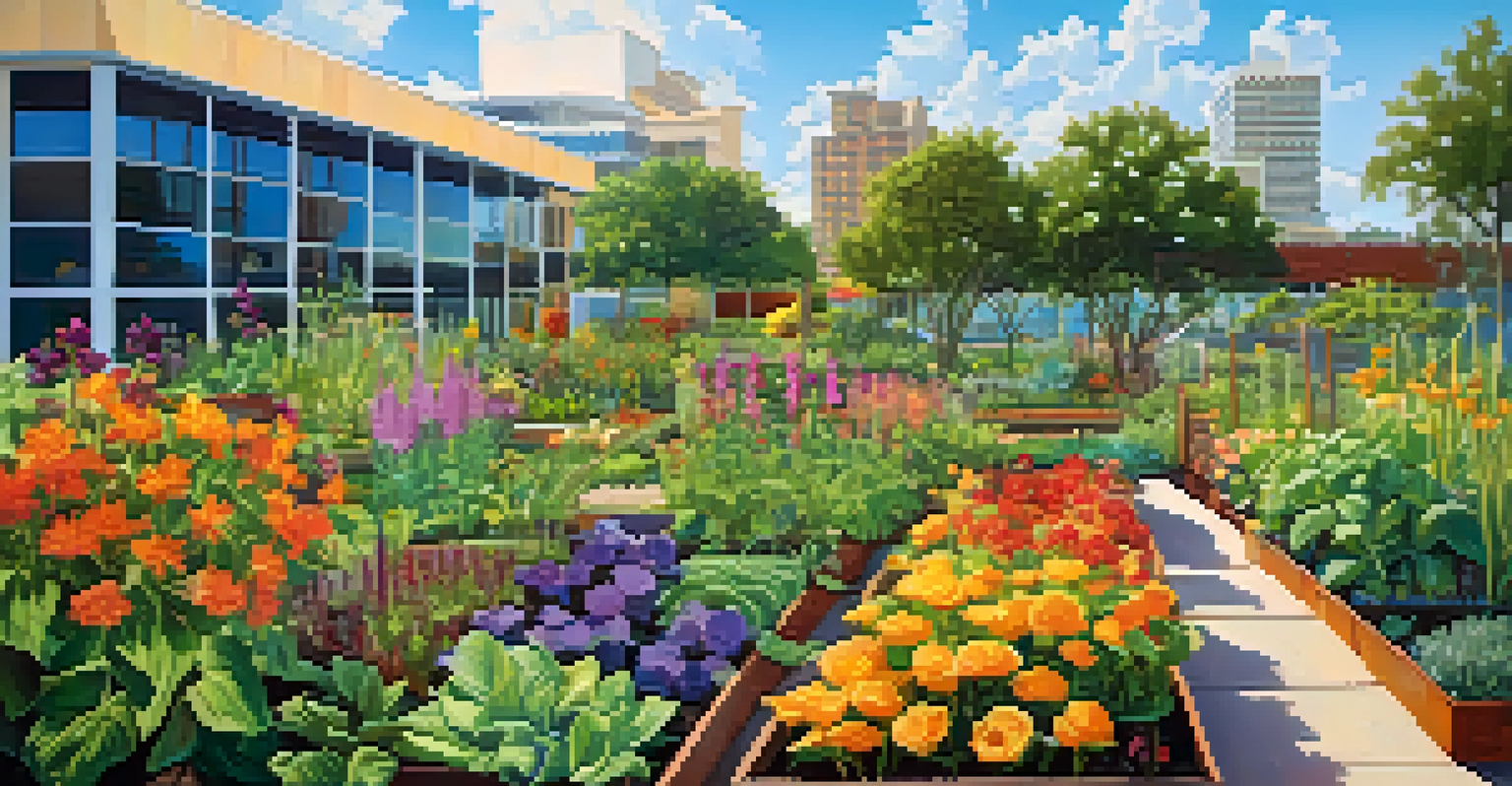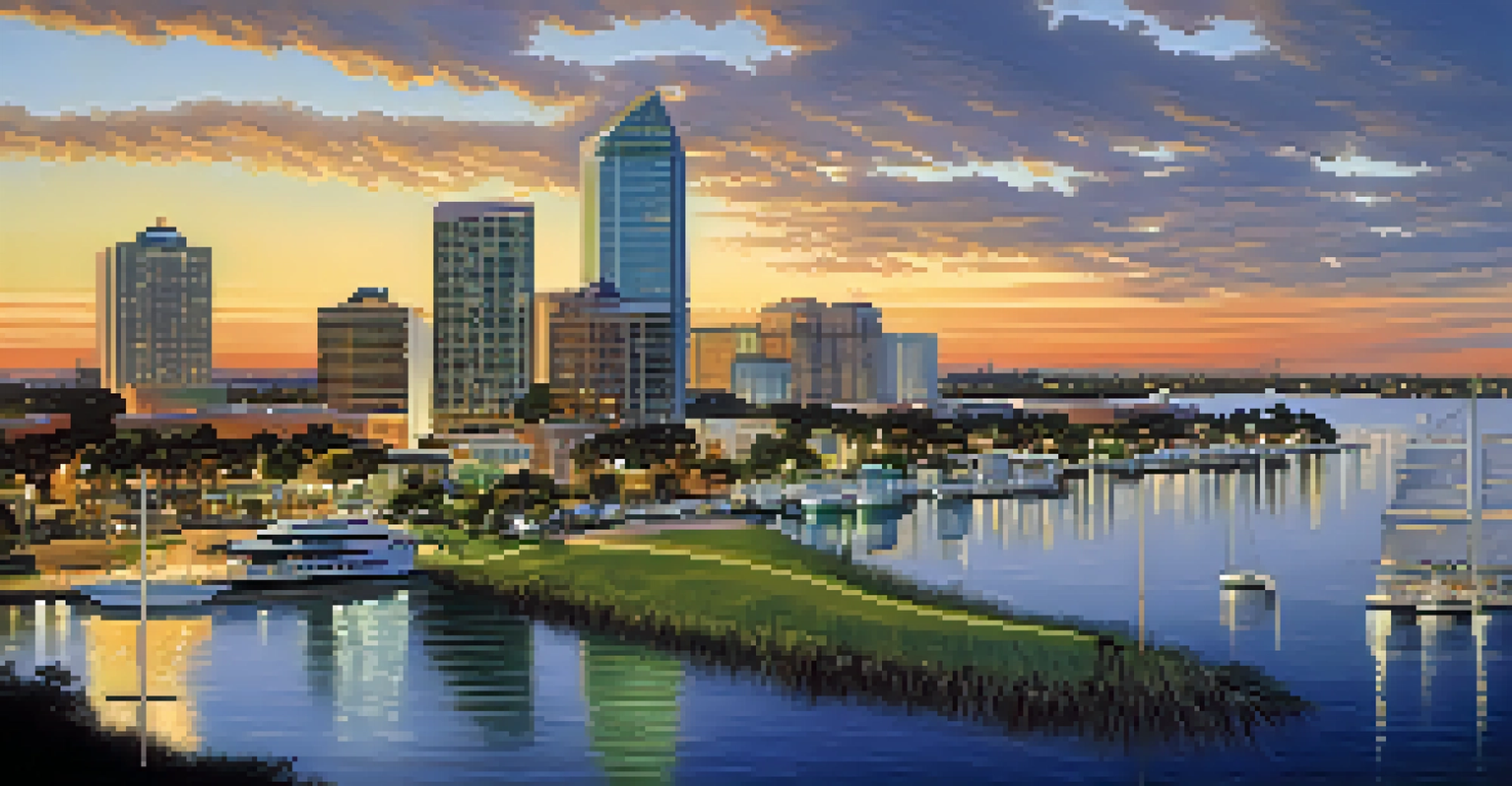Urban Development and Its Environmental Impact in Tampa

Understanding Urban Development in Tampa's Context
Urban development refers to the growth and expansion of cities, impacting infrastructure, housing, and transportation. In Tampa, this growth has been significant over recent decades, reflecting a broader trend seen in many metropolitan areas. As the population increases, so does the need for residential areas, commercial spaces, and public services.
The greatest threat to our planet is the belief that someone else will save it.
However, this rapid development often comes with challenges, particularly concerning environmental sustainability. Tampa's unique ecosystem, including wetlands and coastal areas, is at risk from the pressures of urbanization. It’s crucial to balance development with the preservation of these vital natural resources.
Understanding urban development in Tampa means recognizing both its benefits and potential downsides. While it can lead to economic growth and improved living standards, it can also threaten biodiversity and contribute to climate change, highlighting the need for thoughtful planning.
The Positive Aspects of Urban Development
Urban development can breathe new life into communities, creating jobs and enhancing local economies. In Tampa, new businesses and infrastructure projects have generated employment opportunities, attracting both residents and tourists. This economic stimulation can lead to a more vibrant city, with improved amenities and services for everyone.

Moreover, well-planned urban development can lead to better public transportation systems. In Tampa, initiatives aimed at expanding public transit can reduce traffic congestion, making the city more accessible. This not only enhances residents' quality of life but also contributes to a reduction in greenhouse gas emissions.
Urban Growth Needs Sustainability
Tampa's urban development must balance growth with environmental preservation to protect its unique ecosystems.
Another positive aspect is the potential for green spaces within urban settings. Parks, community gardens, and recreational areas can be integrated into urban plans, providing essential green lungs for the city. These spaces not only enhance aesthetic appeal but also improve air quality and offer residents a place to connect with nature.
The Environmental Challenges of Urban Expansion
Despite the benefits, urban development poses significant environmental challenges. One of the most pressing issues is habitat destruction, which occurs when natural landscapes are replaced with buildings and roads. In Tampa, this can threaten local wildlife and disrupt ecosystems that have existed for centuries.
Sustainability is no longer about doing less harm. It's about doing more good.
Additionally, increased impervious surfaces, such as concrete and asphalt, lead to greater runoff during rain events. This runoff can carry pollutants into Tampa Bay, harming marine life and affecting water quality. The city’s unique coastal environment is particularly sensitive to these changes, making it critical to manage runoff effectively.
Moreover, urban heat islands can form as cities expand, where built-up areas become significantly warmer than their rural surroundings. This phenomenon can exacerbate the effects of climate change, leading to increased energy consumption for cooling and further stressing local ecosystems.
Integrating Sustainability into Urban Planning
To mitigate environmental impacts, it’s essential to integrate sustainability into urban planning. Tampa has begun to embrace practices such as green building standards and sustainable land use policies. These approaches aim to minimize ecological footprints while still accommodating growth.
For instance, incorporating green roofs and energy-efficient designs in new developments can reduce energy consumption and promote biodiversity. Additionally, preserving existing green spaces and restoring degraded areas can help maintain the ecological balance within urban settings.
Community Involvement is Key
Engaging residents in the planning process fosters trust and ensures that urban development aligns with community values.
Community involvement also plays a crucial role in sustainable urban planning. Engaging residents in decision-making processes ensures that development reflects the needs and values of the community, fostering a sense of ownership and responsibility for the environment.
The Role of Government and Policy in Development
Government policies are pivotal in guiding urban development while safeguarding the environment. In Tampa, local government initiatives aim to facilitate smart growth that aligns with sustainability goals. Zoning laws, environmental regulations, and land-use plans are critical tools for managing development effectively.
Moreover, collaboration among various stakeholders, including city planners, environmental groups, and community members, can lead to more informed and balanced decisions. These partnerships can help identify potential environmental impacts early in the planning process, allowing for proactive measures.
Additionally, funding for green infrastructure projects is vital. Government investment in sustainable practices not only demonstrates commitment to environmental stewardship but also encourages private sector involvement in eco-friendly development.
Community Engagement in Urban Development
Community engagement is crucial for successful urban development in Tampa. By involving residents in the planning process, officials can better understand their needs and concerns. This approach fosters trust and ensures that development projects align with community values and priorities.
Public forums, surveys, and workshops are effective ways to gather input from citizens. These platforms allow for open dialogue, enabling residents to express their thoughts on proposed developments, environmental concerns, and desired amenities. This engagement not only empowers residents but also leads to more sustainable outcomes.
Government's Role in Smart Growth
Effective government policies and collaborations are essential for guiding sustainable urban development in Tampa.
Furthermore, community-led initiatives, such as neighborhood clean-ups and local advocacy groups, can significantly enhance the city’s environmental health. When residents take an active role in shaping their surroundings, they not only improve their immediate environment but also contribute to a stronger sense of community.
Future Directions for Tampa's Urban Development
As Tampa continues to grow, the future of urban development must prioritize environmental sustainability. Implementing innovative solutions, such as smart city technologies, can enhance resource management and reduce environmental impacts. For instance, smart sensors can optimize energy use in buildings and improve waste management systems.
Additionally, the preservation of Tampa’s natural landscapes should be a key focus. Creating more protected areas and green corridors can help maintain biodiversity and provide residents with access to nature. This balance between urbanization and conservation is essential for a thriving, sustainable city.

Lastly, fostering a culture of sustainability within the community will be vital. Educational programs and initiatives that promote environmental awareness can inspire residents to adopt more sustainable practices in their daily lives, ensuring that Tampa remains a vibrant and eco-friendly city for generations to come.